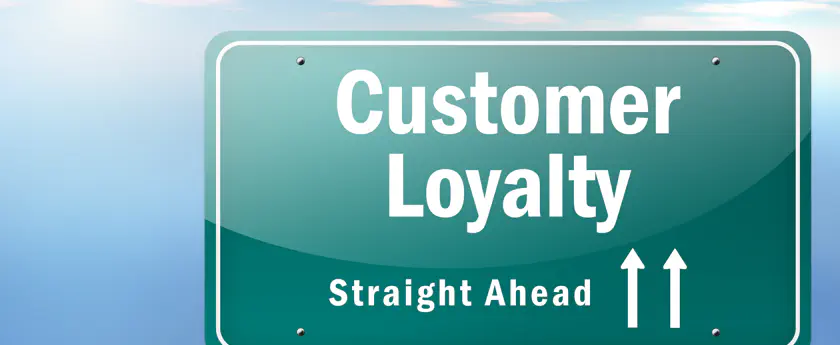Use Customer Surveys to find out What Keeps Us Going Back?
Have you stayed at a hotel recently? Was the staff attentive? Was the room clean? Were the halls quiet? How was the food? Would you stay there again?
We decide whether we will continue to patronize our usual haunts based on how we ‘feel’ as a result of doing business with people there. As is so often the case, however, it is often easier to describe why we will not return to a place of business, rather than describe why we will continue to patronize a business, store, restaurant or hotel.
“The most common reason people do not return to a hotel is due to rudeness of and poor service from staff,” according to Nik Geronikolas, owner and partner of the Geronikolas Group of Companies that includes a resort and several hotels.
Geronikolas added that three additional factors likely to keep customers from returning to a hotel are lack of cleanliness, sub-par food and beverage standards, and poor overall value for the money. An individual’s desire to experience different accommodations on future trips also strongly influences the decision not to return.
The fact that a customer can be highly satisfied with his or her hotel stay and yet choose not to return is an important flag indicating that customer satisfaction is not enough to generate customer loyalty.
So, what will generate customer loyalty?
Retaining customers and repeat business is more important than ever to business sustainability and profitability with increasing competition in the global economy.
Research shows that many factors influence our intent to return to a business, including customer service, employee engagement, proximity to work or home, availability of our favorite product brands, value of the product or service for the price, and overall customer satisfaction.
However, it is most often our behaviors, attitudes, and values that drive whether or not we will return to a business.
If John is unable to purchase what he needs on his way to and from work, he goes without. Sharon, on the other hand, goes out of her way to find the most economical price, which has taken her virtually around the world. Aaron never shops online, preferring to touch and see products.
For some consumers gathering goods and services is about convenience. For others it is about getting the best value for the price. For still others it’s about the collective experience – the anticipation of going to the store and participating in a multi-sensory experience, seeing colors, hearing sounds, smelling odors, tastings samples, and touching products. It’s about the ‘feel’ of the entire experience.
Icek Ajken and Martin Fishbein are co-authors of Understanding Attitudes and Predicting Social Behavior. In his Theory of Planned Behavior, Ajken states that human behavior is influenced by behavioral beliefs, normative beliefs, and control beliefs.
Behavioral beliefs create a positive or negative attitude towards a behavior. Based on our experience, we know (or believe) that we are successful when doing some things and unsuccessful when doing others. John knows what to expect when he walks into the stores in his community; he has had positive experiences in the past and been successful in all aspects of making his purchases. Sharon has a disability which confines her to the house most of the time, so relies on the Internet for her purchases; Aaron knows he is inept when using any form of technology and navigating the Internet.
Normative beliefs result in perceived social pressure; the opinions of others influence our behaviors. John defies his friends to find better deals than he finds between work and home. Sharon has learned to plan ahead in her online purchases so she is not caught without a necessity; she buys in bulk to refute admonitions from her family that she pays more in shipping and handling than she does for products purchased. Aaron’s friends and family have had miserable experiences shopping online — paying costly postage for shipping purchases, being unable to return merchandise and subsequently stuck with unwanted products. So, Aaron has no desire to complicate an already full life by shopping online.
Control beliefs relate to whether or not we believe that something is easy or difficult to accomplish. What thoughts influence our intent to return to that store? Given John’s schedule, it is easier to shop between work and home. Sharon is unable to easily leave her house and finds it easier to make purchases online. Aaron has such difficulty navigating the Internet that he will travel anywhere to make a purchase.
Bottom line, there is a direct relationship between our attitudes and our behavior. The greater our confidence in our past experiences, there is a strong likelihood that we intend to return to a place of business.
The Theory of Planned Behavior helps to explain why an advertising company is not effective when just giving us information about a product.
“Increasing knowledge alone does not change behavior,” states Ajken, adding that “campaigns that aim at attitudes, perceived norms, and control in making a change or buying certain goods have better results.”
What are the factors that most likely drive customers away from returning to your business? Make a list and then examine stakeholder behaviors, attitudes, and values. Challenge assumptions and ways of doing business. Consider everything you do from the customer’s point of view. And, note the relationship between the following elements in the service profit chain, described in the Harvard Business Review, OnPoint:
- Internal quality drives employee satisfaction;
- Employee satisfaction drives loyalty;
- Employee loyalty drives productivity;
- Employee productivity drives value;
- Value drives customer satisfaction;
- Customer satisfaction drives customer loyalty; and
- Customer loyalty drives profitability and growth.
Understand your business from your customer’s point of view by conducting a customer survey. Then, resurvey periodically to gauge the effectiveness of your improvement initiatives.
If you would like to learn more about how NBRI can help identify what drives customers to (or away from) your business, contact us at 800-756-6168.
Terrie Nolinske, Ph.D.
Research Associate
National Business Research Institute




























 By submitting this form you agree to our
By submitting this form you agree to our